8.15: Natural selection can change the traits in a population in several ways.
Certain traits are easily categorized—
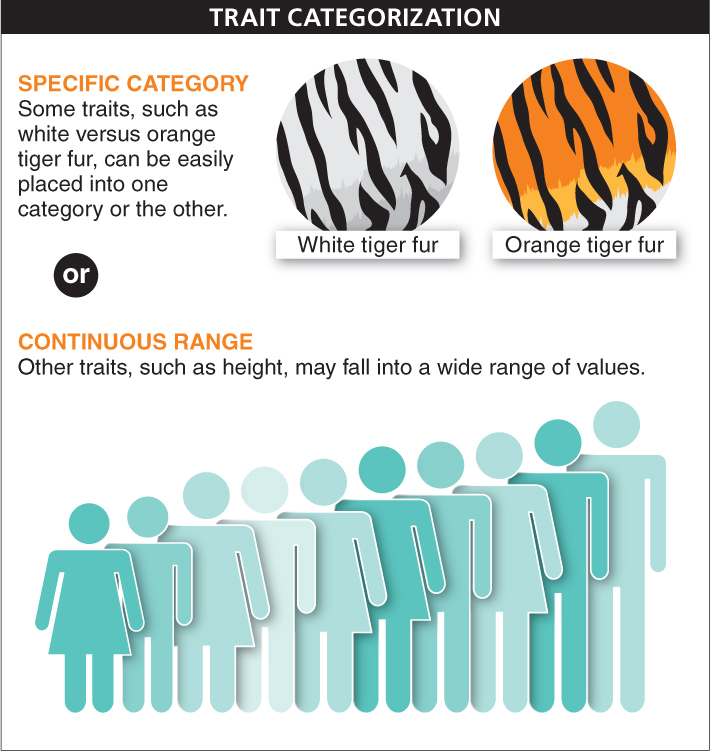
Directional Selection In directional selection, individuals with one extreme of the range of variation in the population have higher fitness. Milk production in cows is an example. There is a lot of variation in milk production from cow to cow. As you might expect, farmers select for breeding those cows with the highest milk production and have done so for many decades. The result of such selection is not surprising: between 1920 and 1945, average milk production increased by about 50% in the United States (FIGURE 8-26).
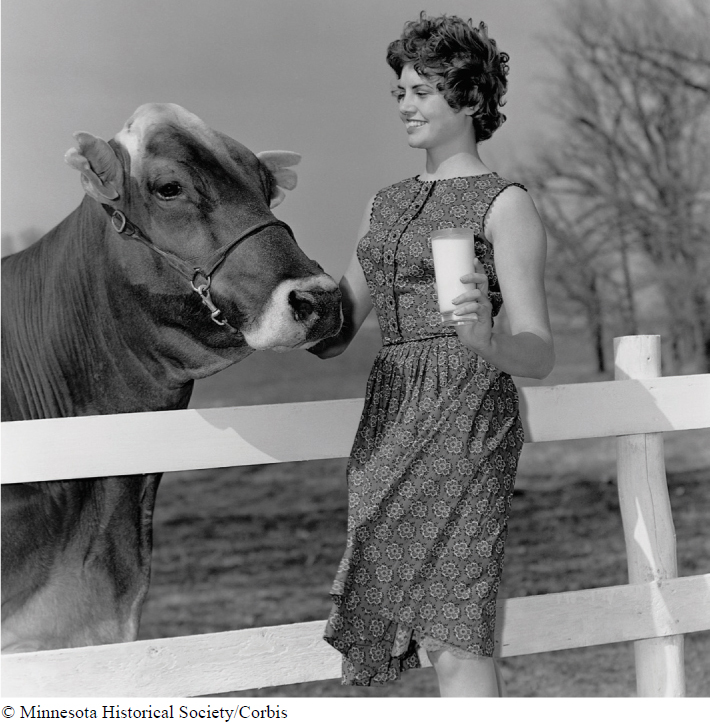
Those at the other end of the range, the cows that produce the smallest amounts of milk, have reduced fitness, since the farmers do not allow them to reproduce, limiting the number of “less milk” alleles in the next generation. In subsequent generations, the average value for the milk-
Hundreds of experiments in nature, in laboratories, and on farms demonstrate the power of directional selection. In fact, it is one of the marvels of laboratory selection and animal breeding that nearly any trait chosen to be exaggerated through directional selection responds dramatically—
Q
Question 8.5
Turkeys on poultry farms have such large breast muscles that they can’t get close enough to each other to mate. How can such a trait evolve?
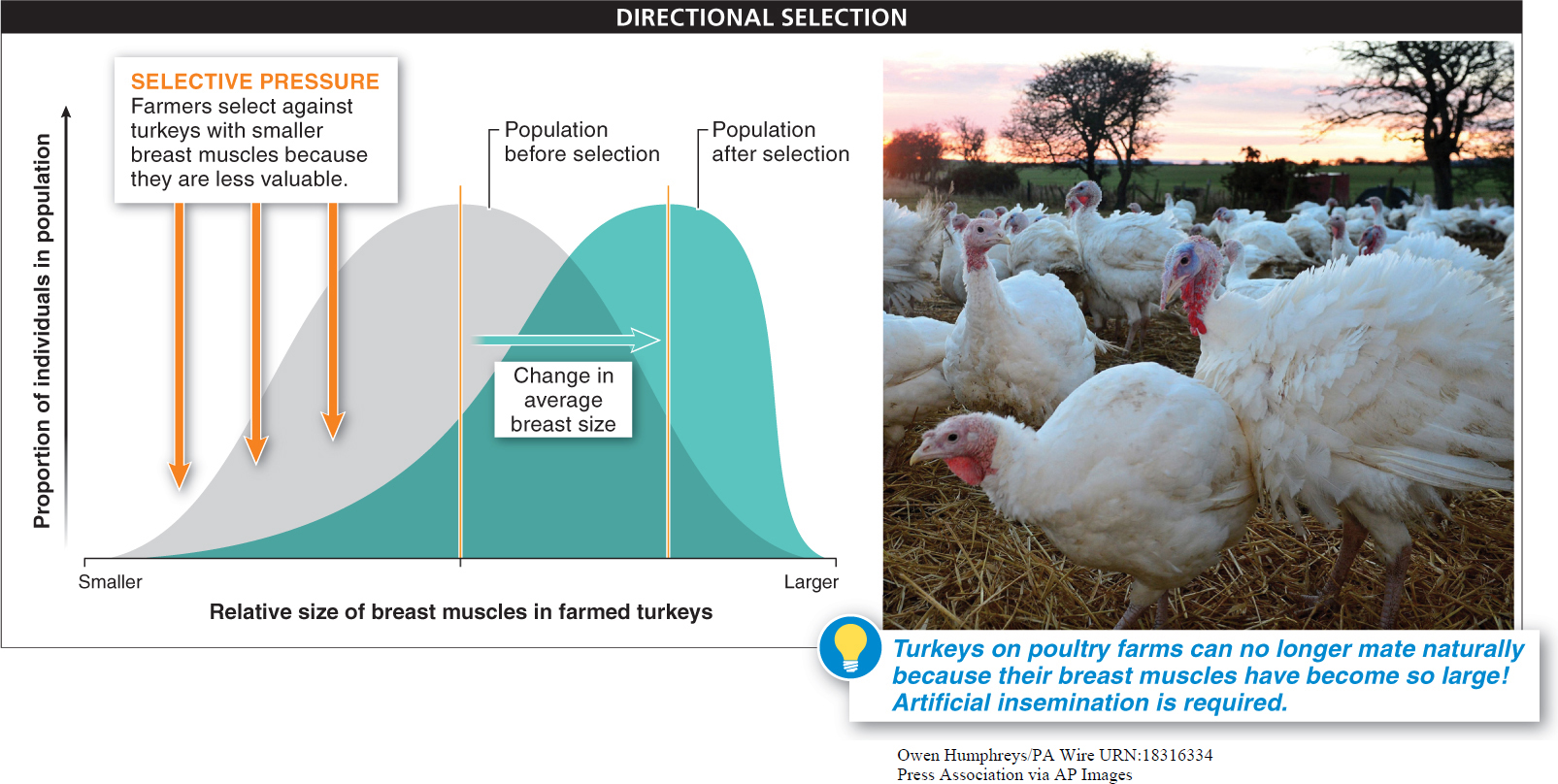
343
Stabilizing Selection How much did you weigh at birth? Was it more than 10 pounds? More than 11? Was it close to the 22 ½ pounds that Carmelina Fedele’s child weighed when born in Italy in 1955? Or was it 5 pounds or less? Unlike directional selection, for which there is increased fitness at one extreme and reduced fitness at the other, stabilizing selection is said to take place when individuals with intermediate phenotypes are the most fit. The death rate among babies, for example, is lowest between 7 and 8 pounds, and is higher for both lighter and heavier babies (FIGURE 8-28). The variation in birth weight has decreased as stabilizing selection has reduced the frequencies of genes associated with high and low birth weights.
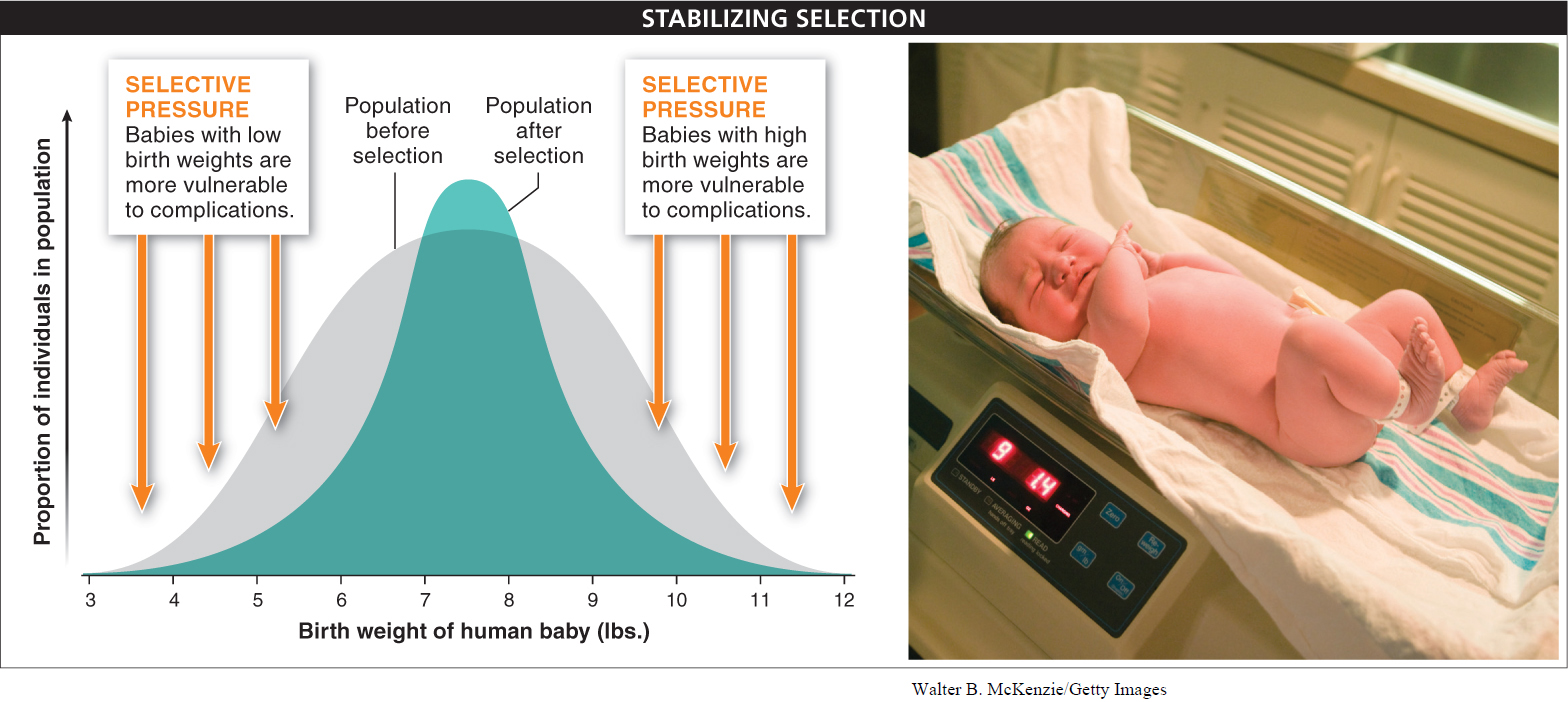
344
Modern technologies, including Caesarean deliveries and premature-
Disruptive Selection There is a third kind of natural selection, in which individuals with extreme phenotypes experience the highest fitness, and those with intermediate phenotypes have the lowest. Although examples of this type of selection, called disruptive selection, are rare in nature, the results are not surprising. Among some species of fish—
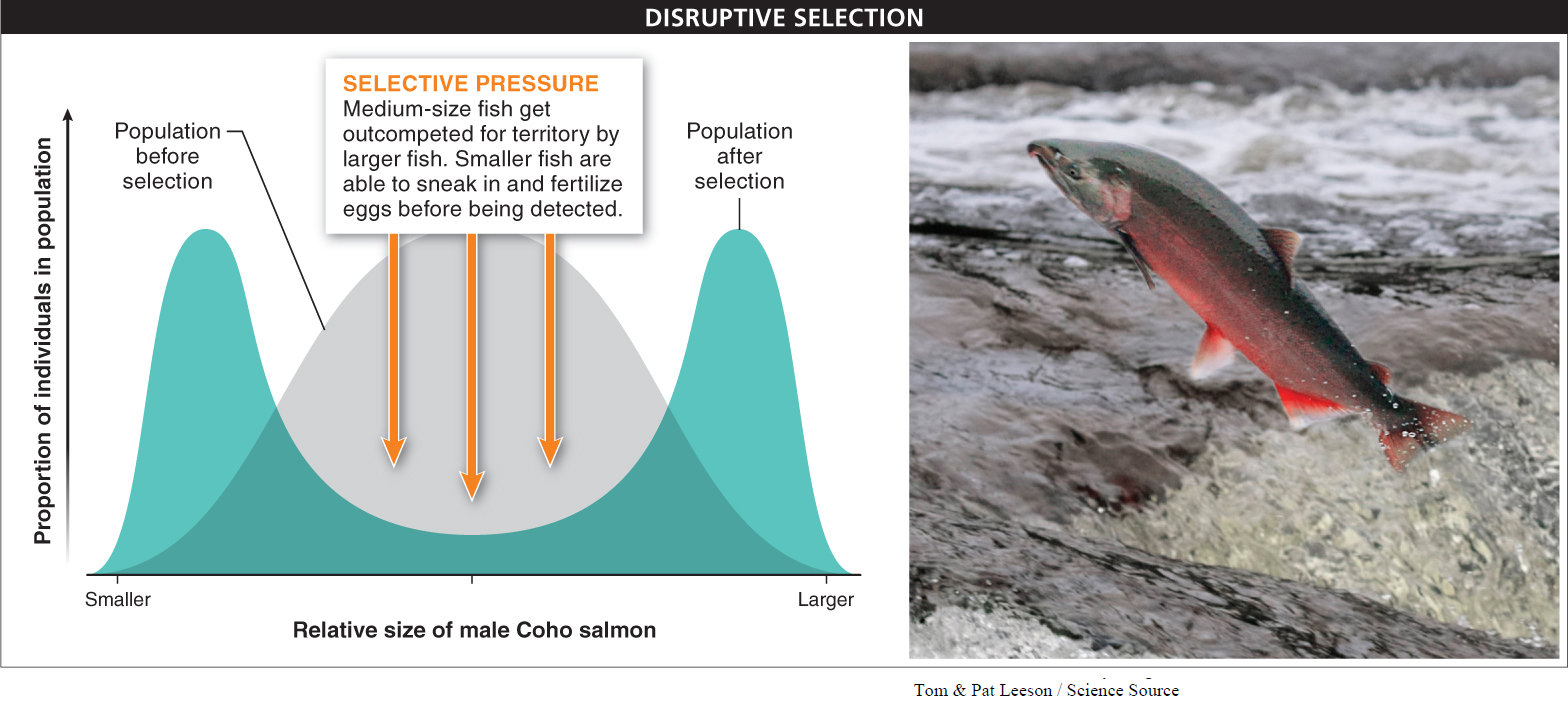
TAKE-HOME MESSAGE 8.15
Acting on traits for which populations show a large range of phenotypes, natural selection can change populations in several ways. These include directional selection, in which the average value for the trait increases or decreases; stabilizing selection, in which the average value of a trait remains the same while extreme versions are selected against; and disruptive selection, in which individuals with extreme phenotypes have the highest fitness.
Briefly describe the three types of selection, and give an example that illustrates each.